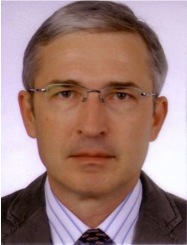Tutorial
Tutorial Ⅰ(Handling of Cells)
"High throughput characterization of cells and the isolation of rare cells by dielectrophoresis combined with field-flow fractionation"
Peter Gascoyne,1 Sangjo Shim1,2
Peter Gascoyne,1 Sangjo Shim1,2
|
1 Department of Imaging Physics, The University of Texas M.D. Anderson Cancer Center, Houston, Texas, USA 2 Department of Biomedical Engineering, The University of Texas at Austin, Austin, Texas, USA |  |
Abustract : There are many applications for which electrokinetic methods are well suited to the manipulation and sorting of cells both in stand-alone configurations and as integrated components of lab-on-chip systems. In most medical applications, cell specimens are heterogeneous and it is necessary to undertake analysis of many thousands of cells in order to analyze the statistical distributions when profiling dielectric properties. Furthermore, to address problems such as the isolation of tumor cells or of bacteria from blood, specimens of at least 10 mL volume must be processed on a timescale of about one hour, requiring a throughput of a million nucleated cells per minute or more. These throughput requirements challenge electrokinetic methods of cell manipulation, like dielectrophoresis, that occur on the microscale. To solve this problem, we have developed field-flow-fractionation methods that manipulate cells incrementally as they pass over large microelectrode arrays in a Poiseuille fluid flow profile. In this presentation, the biological characteristics underlying differences in the dielectric properties of different cell types will be discussed and the methods by which dielectrophoresis can be combined with field-flow-fractionation for profiling cell dielectric, density and mechanical characteristics and adapted to high throughput isolation of rare tumor cells and bacteria from blood will be shown.
Keywords: Cell dielectric properties, Cell membrane area, Cell morphology, Dielectrophoresis, Field-flow-fractionation, Circulating tumor cells, Bacteria, Bacteremia
Tutorial Ⅱ (Processing of Cells)
"A biophysical approach to the optimization of electrotransfection and electrofusion of biological cells"
Ulrich Zimmermann,1,2 Vladimir L. Sukhorukov2
Ulrich Zimmermann,1,2 Vladimir L. Sukhorukov2
|
1 ZIM Plant Technology GmbH, Hennigsdorf, Germany 2 Dept. Biotechnology & Biophysics, University of Wurzburg, Germany |  |
Abustract : Growing applications of electrotransfection and electrofusion of cells in clinical studies and biotechnology require efficient electromanipulation protocols based upon well-founded physical principles. In the last years, we developed a biophysical approach to the optimization of electromanipulation, which is superior to the commonly used empirical or trial-and-error optimization schemes. Our approach includes a thorough dielectric analysis of the target cells by the single-cell electrorotation and dielectrophoresis techniques. The dielectric data are essential for the optimization of the field strength and duration of DC pulses triggering membrane breakdown, and also of the field frequency for stable cell alignment prior to electrofusion. A further significant improvement of electrofusion and electrotransfection can be achieved by reducing both conductivity and tonicity of suspending media, which serves multiple purposes associated with the hypotonic cell swelling and related dielectric cell properties. To ensure the optimal efficiency of hypotonic electrofusion, however, the osmotic cell volume regulation has to be considered, which can abolish the beneficial effects of hypotonicity by reducing cell size, restoring microvilli and by excessive leakage of cytosolic electrolytes. The experimental findings and approaches presented here can generally be used for the development of cell-type-specific electromanipulation conditions, thus facilitating rational design of hybridisation and transfection protocols, for a wide range of biological cells, including rare and valuable human cells, giant liposomes, as well as plant and yeast protoplasts.
Keywords: Electrofusion, Electrorotation, Electroporation, Multi-cell electrofusion, Dendritic cells, Tumor cells, Osmotic stress, Regulatory volume decrease, Giant cells



